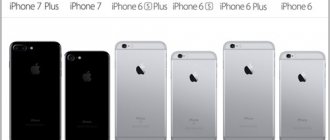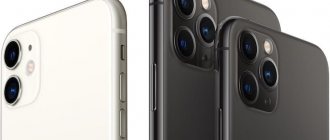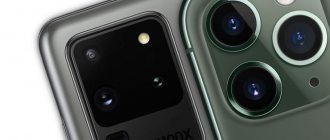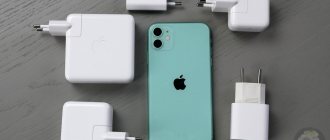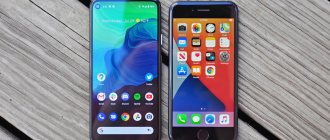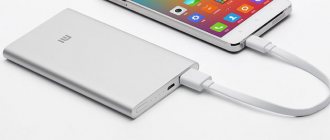06.03.2019
The new flagship Apple iPhone XR has not become popular in the market. Instead, people are buying the more expensive iPhone XS or even the iPhone X. Apple even decided to produce more of the “old” iPhone X, as they continue to sell actively, while the XR models remain on the shelves. Let's figure out whether it makes sense to buy the new iPhone XR or is it better to stick with the “ten”.
Display
Let's start with "X". The smartphone received an Amoled matrix manufactured by Samsung. Its diagonal is 5.8 inches, resolution is 2436×1125, which gives a high pixel density of 458 ppi. The display here is cool, it supports HDR10 and Dolby Vision standards, and also has True Tone automatic white balance adjustment depending on the light level. Apple claims a high maximum brightness of 625 cd/m2. In fact, it turned out to be even higher.
Matrix testing results at 100% backlight:
- White brightness: 679 cd/m2
- Black brightness: 0 cd/m2
- Contrast: ∞
Average color rendering error DeltaE: 1.9; maximum – 2.9.
I’ll add that the iPhone X has an Amoled matrix from Samsung NOT of the latest generation. This has an extremely high maximum brightness at which Amoled displays can burn out. There is already a video on YouTube where you can see the residual image from icons on Amoled screens, which clearly appears on a white background.
Screen on iPhone XR
XR received an IPS matrix. On the one hand, this is good, since there is no pixel burnout, plus there is no PWM at minimum brightness. But you will not get the maximum contrast that is available on Amoled matrices, since the black color glows here.
Test data:
- White brightness: 700 cd/m2
- Black brightness: 0.425 cd/m2
- Contrast: 1647
For an IPS matrix, a brightness of 700 cd/m2 is a very high figure. Plus, the DeltaE color deviation here is only 0.6, that is, the iPhone XR may have the most accurate display in the world in terms of color, here white looks real white.
The only possible negative is the low pixel density of 326 PPI. However, in practice, you won't notice any pixelation on the display even when reading text, as the 326 ppi density exceeds most people's visual acuity.
There is no obvious winner in terms of screens. On the one hand, the display in the iPhone X is better, since it is Amoled with infinite contrast; on the other hand, IPS does not burn out and does not produce PWM at minimum brightness, which means that when reading text in the dark your eyes will not get tired.
Which is better - iPhone X or iPhone XR
I wanted to answer this question unambiguously, but it won’t work. The iPhone XR is an excellent smartphone, but with all its pros and cons, I would still choose the iPhone X. Still, 6.1 inches is too much for comfortable use (5.8 is quite enough), and you won’t notice the difference in performance during normal use . Once I started using the iPhone X with the OLED screen, it was difficult to look at the IPS. Then, of course, I got used to it, but still my hand reaches for “ten” - the difference in the richness of the colors is too obvious.
In addition, iPhone X can now be bought at good prices. This may already be an outdated smartphone, but it will be relevant for at least another couple of years.
Of course, this is my subjective opinion, inspired by two months of using the iPhone XR. What do you think? Let's discuss in the comments and in our Telegram chat.
Battery and autonomy
iPhone X is equipped with a 2716 mAh battery and supports fast and wireless charging. This is the first model with these technologies; there has been nothing like this in iPhones before. The problem is that the kit comes with a simple cheap 5 W charger, which gives only 20% charge in 30 minutes - with such a small battery capacity, this is very slow charging. Apparently, Apple decided to make extra money by selling expensive and more powerful Mac chargers.
The iPhone X battery charge lasts for:
- 19:03 hours of communication.
- 9:26 hours surfing the Internet (brightness set to 200 cd/m2).
- 12:07 h video playback (200 cd/m2).
iPhone XR autonomy
In this smartphone, battery life is a little better. The 2942 mAh battery is enough for:
- 15:03 hours of communication.
- 13:04 hours surfing the Internet (brightness set to 200 cd/m2).
- 15:08 h video playback (200 cd/m2).
And although the iPhone XR is the new flagship from Apple, which came out later than the iPhone XS and even more so the iPhone X, Apple is still repeating the mistake for which I criticize it so much - it offers a cheap charger in the kit for an expensive flagship. Along with the XR, you get the same 5W adapter, which charges the device up to 40% in an hour. A full cycle lasts about 3 hours, which is a terrible result for a flagship. Since the phone supports fast charging, you can buy a more powerful charger from MAC.
In terms of autonomy, the iPhone XR wins, since it has a large capacity and operating time when surfing the Internet and playing videos.
Bottom line
If you choose a smartphone based on its camera, don’t photograph hyper-pink flowers in macro, and you’re not too bothered by the poor dynamic range and the lack of a 2x optical zoom, then take the iPhone XR. For a single-camera smartphone, it did very, very well indeed.
The iPhone X has a rather strange situation: on its screen, photos look great, but when you put them on your computer, all the magic is lost. Apple, what's going on?
It’s even more strange that in previous tests, where we compared the cameras of the iPhone XS Max and iPhone 7 Plus, the “seven” confidently held the upper hand in many scenarios. And Max and XR have exactly the same cameras. So it turns out that the 7 Plus shoots better than the “tens”? Seems kind of crazy, right?
Here's how the tests went, by the way:
The cameras of the iPhone XS Max and iPhone 7 Plus were compared. Not everything is so clear
Ilya Kichaev
18 September 2018
And here is the second part, where we collided smartphones head-on late in the evening:
Performance
In terms of software, there is no difference between the phones. Both will be updated to the latest iOS for a very long time. For example, even the old iPhone 5s, which originally came with iOS 7, received the latest update to iOS 12.
So, performance. Smartphones use processors of different generations. The iPhone X has a cool Apple A11 Bionic chip, made using a 10nm process technology. There are 2 powerful Monsoon cores and 4 energy efficient Mistral cores. The chip also features Apple-made graphics and a 2-core neural processor that provides machine learning speed.
The iPhone XR has a more modern Apple A12 Bionic chip, made using a 7nm process technology. There are 2 high-performance Vortex cores and four weak Temtest blocks. It is believed that this chip is 15% more powerful and 40% less power hungry than the previous A11 Bionic.
Benchmark performance results and comparison with Samsung Galaxy S9+ with Exynos 9810 processor.
GeekBench 4.1 (single core)
- iPhone XR – 4818
- iPhone X – 4256
- Samsung Galaxy S9+ – 3771
GeekBench 4.1 (multi-core)
- iPhone XR – 11437
- iPhone X – 10215
- Samsung Galaxy S9+ – 8883
In terms of performance, the iPhone XR wins, since the Apple A12 Bionic is an extremely powerful processor, which in January 2019 is considered the most productive and outperforms its only competitor - the 7 nm HiSilicon Kirin 980 (there are no phones with Snapdragon 855 yet).
iPhone X, Xs and Xr - how are they different?
Since we decided to disassemble and compare iPhones in one material, we will briefly look at each of them and what new functionality they brought.
Brief review of iPhone X: the first “bezel-less”, FaceID and Animoji
As is already known, this began in September 2017, when “that same” phone from Apple was released to coincide with the tenth anniversary of “that same” line.
As we said earlier, one of the main innovations of this device was the absence of a Home button and the creation of the illusion of a frameless screen. The display itself has a diagonal of 5.8 inches and an OLED matrix. Thanks to this, the picture of the smartphone has become deeper and more saturated, and the color rendition is brighter. The device itself is made in an aluminum case with glass on the back panel.
Among the technical characteristics of the iPhone 10, it is necessary to highlight the updated six-core Apple A11 processor, in which 4 of the cores are highly productive, and the remaining 2 are energy efficient. Thanks to this multi-core technology, the smartphone has become more productive than its predecessors. In addition to the processor, the smartphone has 3 GB of RAM and from 64 to 256 GB of internal memory (depending on the configuration).
The cameras were another innovation from the Cupertino company. The main camera is the same dual as in the previous iPhone 7 Plus and 8 Plus models, but is now placed vertically. It uses a 12 MP iSight module, has dual optical stabilization and uses a 4-LED TrueTone flash.
The front TrueDepth camera received a 7 megapixel module. It, in tandem with the A11 Bionic processor, now allows you not only to take gorgeous pictures, but to use FaceID, and also transfer your facial expressions to Animoji.
FaceID is a new word in security from Apple. In simple words, this is scanning the face of the owner of an iPhone to gain access to it (as well as to make payments and other actions that require maximum security). This technology is based not just on the front camera module, but on neural networks and machine learning. What does this mean? The fact that the user no longer needs to be afraid of “changing his image”, since FaceID will remember all facial changes.
As we stated earlier, this is a brief review of the iPhone 10. Now we can look at newer smartphone models and find out what the difference is between the iPhone X and Xs, Xs Max or Xr!
Improved and improved “improved iPhone 10”: iPhone Xs and Xs Max review
Since there is no longer a Home button, Apple decided to enlarge the display of the smartphone this time. If iPhone Xs buyers received the usual 5.8 inches, then those who bought iPhone Xs Max got a whole 6.5 inches! Both smartphones have Super Retina HD OLED matrix screens with a pixel density of 458 ppi and support for Dolby Vision and HDR10, making them practically the best displays in smartphones at the moment. The aluminum body was replaced with a steel one this time.
The Apple A11 Bionic was replaced by the A12 Bonic with an updated Neural Engine, which is responsible for machine learning and FaceID. The 7-nanometer processor houses 2 high-performance and 4 energy-efficient cores. This allowed us to achieve at least a 15% increase in performance compared to the iPhone 10. In addition, the iPhone 10s and 10s Max each received 4 GB of RAM and 64-512 GB of internal memory.
One of the biggest differences not only from last year’s Apple iPhone X, but also its predecessors, was the support for two Sim cards at once. But there is a catch here: two physical SIM cards only support “Chinese” iPhones (no matter how paradoxical it may sound), and smartphones for Europe and America support only one physical Nano-SIM card and an eSim (electronic).>
The cameras have received minor improvements in the form of increased pixel size, as well as a decrease in the wide-angle camera angle (from 28 to 26 mm).
In short, this is exactly what the new iPhone Xs Max and Xs turned out to be. Perhaps, if you compare the iPhone Xs and iPhone X, you will not find global changes, but if you compare the same “ten” with the 10s Max, this is exactly the iPhone X Plus that everyone has been waiting for. After reviewing the iPhone Xs Max and Xs, it remains to disassemble the last one - the “economic” model of the phone from Apple.
iPhone Xr mini review: a budget iPhone option?
iPhone 10r was presented along with its “big brothers” in September 2022. It was presented as a budget iPhone, as was done with the iPhone 5C. Of course, based on the stated price of the device, it’s difficult to say that it is budget, but in comparison with the new “tens”, the price of the iPhone Xr is really lower.
The smartphone itself is made in an aluminum body, which comes in more vibrant colors: black, white, blue, yellow, coral and red! The display it received, in turn, was simplified - an LCD-matrix Liquid Retina with a lower (than other “ten”) resolution and a pixel density of 326 ppi.
In terms of hardware, the phone is comparable to the more serious 10s and 10s Max - it also has an Apple A12 Bionic chip on board with a clock frequency of 2.49 GHz for each of the 6 cores. But this model received 3 GB of RAM, which is slightly less than that of the gadgets mentioned above.
The main camera module in the budget version of the Apple iPhone is simplified and there is only one. This is a wide-angle camera with a 12-megapixel module, f/1.8 aperture and optical stabilization. The front camera is no different from the flagships - a 7MP module with an f/2.2 aperture, which is still responsible for FaceID and Animoji.
Camera
The iPhone X has 2 cameras on the rear panel – a regular 12 MP sensor + a telephoto lens that can shoot at 2x zoom. There is optical stabilization on each of them, 4K/60 FPS shooting, the pixel size is 1.22 microns.
The XR has only one camera on the back - with a resolution of 12 megapixels and an f/1.8 aperture, optical stabilization and a pixel size of 1.4 microns. Technically, the camera here is better due to the larger matrix; shooting in 4K/60 FPS is also supported.
Comparison of shooting quality under the same lighting conditions. Below are 2 photos on the iPhone X and XR, and then the crops.
iPhone X iPhone XR Crop iPhone X Crop iPhone XR iPhone X iPhone XR
It is obvious that the iPhone XR produces a wider dynamic range when shooting, displaying details in the backlit areas of the scene.
In this comparison, the iPhone XR wins, which was expected given the more powerful processor and matrix with larger 1.4-micron pixels.
Cons of the iPhone XR
In addition to what I mentioned above, for me the downside of the iPhone XR was its side frame - it is made of aluminum, whereas the iPhone X and “older” ones are made of steel. Yes, the latter collects scratches better, but I really like the way steel looks in contrast with glass. Among our readers there are many who are in favor of aluminum frames - this is probably a matter of taste.
And you know, for me this is the only significant disadvantage of this smartphone. Yes, the frames are large. Yes, it is big and heavy, and the screen is not OLED. But you stop noticing the first two points very soon, the same goes for OLED, especially if you’ve never used it before.
